Part of a series of articles titled Curiosity Kit: Malcolm X .
Previous: Learning from Malcolm X
Article
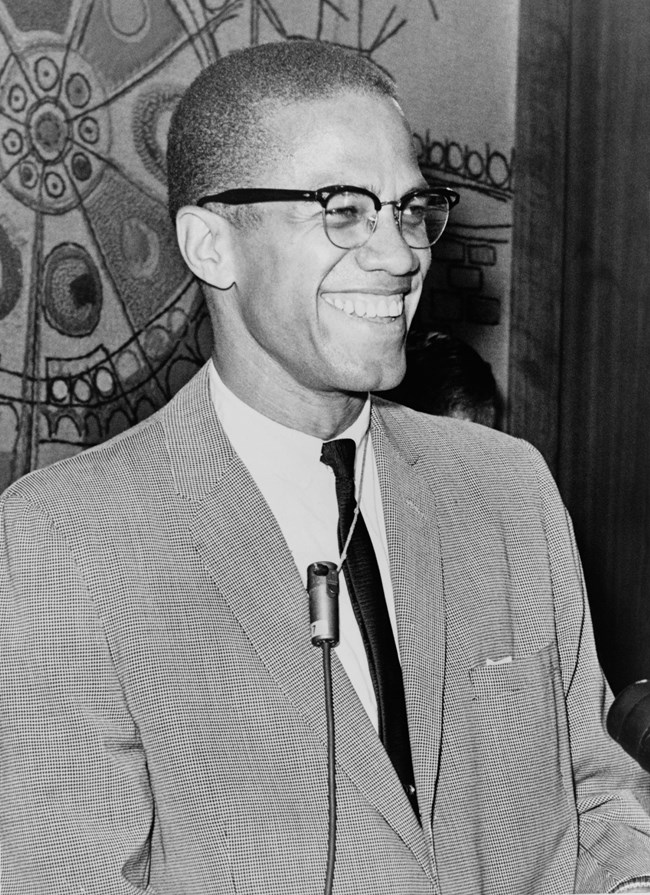
Several years before his assassination, Malcolm X wrote an autobiography about his life. In the decades since his death, historians and journalists have conducted oral histories with his relatives and friends to better understand his life and legacy. How would you narrate the events of your own life? Who do you trust to tell your story?
Malcolm X, born Malcolm Little, experienced racism throughout his life. Threats of violence from the Ku Klux Klan (KKK) forced his family to flee Omaha, Nebraska shortly after Malcolm was born in 1925.1 The harassment continued even as his parents, Louise and Earl, tried to make a life in Lansing, Michigan. Only a small child at the time, Malcolm remembered the day a white supremacist group burned down his house in 1929:
“I remember being suddenly snatched awake into a frightening confusion of pistol shots and shouting and smoke and flames. My father had shouted and shot at the two white men who had set the fire and were running away. Our home was burning down around us. We were lunging and bumping and tumbling all over each other trying to escape. My mother, with the baby in her arms, just made it into the yard before the house crashed in, showering sparks.”2
The Little family endured a series of tragedies in the following years, including Earl’s unexpected death in 1931. Louise had to provide for and raise her children alone. She was eventually committed to Kalamazoo State Hospital for mental health treatment. Without their mother, Malcolm and his siblings were sent to different foster homes.3
As a teenager, Malcolm lived with foster families and with relatives. He excelled in school, becoming the eighth-grade class president at Mason Junior High School. He even expressed interest in becoming a lawyer until one of his teachers told him to be “realistic” about his career goals. Using a racial slur, his teacher discouraged him from pursuing what was considered a predominately white profession at the time.4
As an adult, Malcolm was put in prison for stealing. He used this time to learn about the teachings of Elijah Muhammad, leader of the Nation of Islam (NOI). Organization leaders preached to a number of African Americans, including people like Malcolm and famed boxer Muhammad Ali.5 Encouraged by the NOI’s teachings, Malcolm renounced his last name and adopted the letter “X”. This letter symbolized the loss of his family’s original African name during the days of slavery.6
After his release in 1952, Malcolm became a minister with the Nation of Islam at Temple Number 7 in New York.7 He became the public face of the NOI and advocated for Black empowerment, Black nationalism, and racial separation. His (and the NOI’s) goals differed from that of other civil rights leaders, including Dr. Martin Luther King, Jr. King preached nonviolence (a strategy encourage by Bayard Rustin) and cooperation with white society. Malcolm X thought white people would always treat Black Americans unfairly. He, and other members of the NOI, believed the only way for Black Americans to thrive was by having a separate society.8
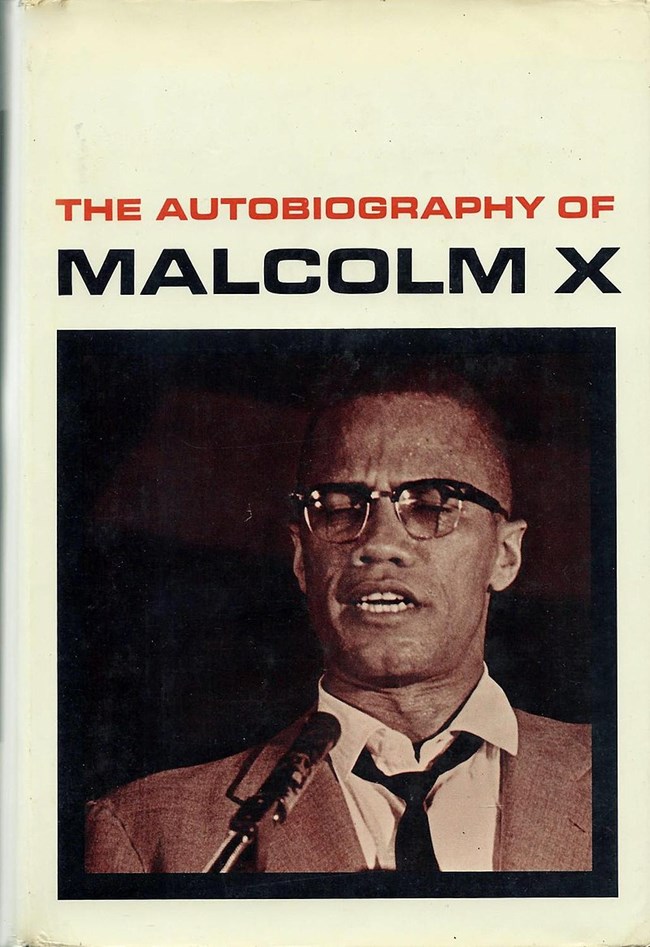
Malcolm’s vision for a separate Black society was very different than the practice of racial segregation. The “separate but equal” law that existed during Malcolm’s lifetime made it difficult for Black people to access white facilities, establish businesses, own homes, and attend certain schools. Malcolm advocated for a society where Black people could be empowered by electing their own officials, controlling their own economy, and establishing their own social organizations. He distinguished between segregation and separatism in a speech he gave at Michigan State University in 1963:
“We don't go for segregation. We go for separation. Separation is when you have your own. You control your own economy; you control your own politics; you control your own society; you control your own everything. You have yours and you control yours; we have ours and we control ours.”9
In 1955 Malcolm met Betty Sanders (also known as Betty Shabazz) after giving a lecture. The couple married in 1958 and had six children.10
In the early 1960s, Malcolm X began to break with the Nation of Islam and Elijah Muhammad. When Malcolm spoke publicly about President John F. Kennedy’s assassination in late 1963, Elijah Muhammad suspended him from the organization for 90 days. Malcolm X was also critical of Muhammad, accusing the NOI leader of not following his own teachings. Malcolm’s hajj to Mecca also had a profound effect on him. The hajj is a religious pilgrimage all Muslims take during their lifetime. Malcolm traveled to Mecca (in modern day Saudi Arabia) using the name Malik El-Shabazz. He continued to use this name even after the trip (and it’s the name on his headstone). Upon returning to the United States, Malcolm renounced the Nation of Islam and became a practicing Sunni Muslim.11
In the following months, Malcolm became more open to participation in the civil rights movement.12 Previously, he and other members of the NOI were critical of King and his actions. Malcolm felt that leaders of the movement were not doing enough to support the needs of poor Black Americans.13 Elijah Muhammad had also discouraged followers from participating in the civil rights movement because its goals did not align with some of his teachings. He wanted Black people to have their own society separate from white America, an ideology at odds with the movement’s goal of racial integration. Malcolm was increasingly frustrated with his inability to take action. After Malcolm left the NOI, he began planning his own organization, the Organization of Afro-American Unity (OAAU). Dedicated to the struggle for Black equality, the OAAU allowed Malcolm to become more involved in the civil rights movement while still advocating Black empowerment.14
On February 21, 1965, Malcolm X was assassinated during a public appearance in Manhattan.15 His autobiography, co-written with Alex Haley, was published after this death.
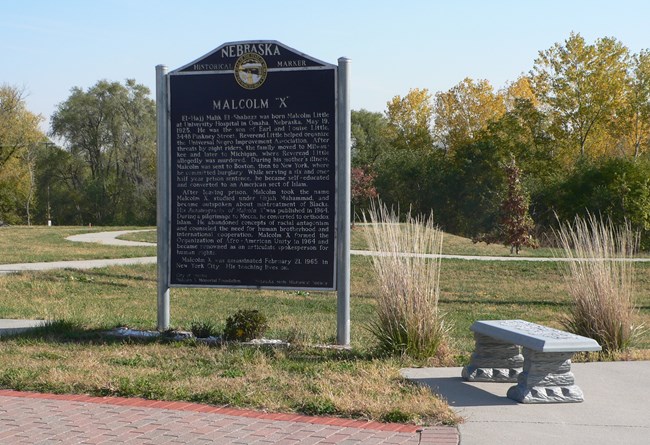
Reverend Earl Little and Louise Helen Little had only been married a few years when they moved from Philadelphia to Omaha, Nebraska with their first child (Wilfred). Earl’s brother, James, had found work at a meatpacking plant in town. He encouraged Earl and Louise to relocate to the Midwest where jobs were plentiful. The Littles uprooted their lives looking for work, like many other Black families during this time period. This movement of African Americans to urban centers in the early 1900s is known as the Great Migration.16
Upon moving to Omaha, Earl and Louise established a local chapter of the Universal Negro Improvement Association (UNIA).17 This organization was founded by activist Marcus Garvey in 1914. The UNIA encouraged people to have pride in their African heritage. A worldwide movement, the UNIA sought to create bonds between all people of African descent.18
Earl organized UNIA activities for local Black residents while Louise served as the chapter’s secretary and branch reporter. The couple were often harassed by local white residents for their involvement in the UNIA. According to family oral histories, the KKK repeatedly threatened the Little family. On one occasion, while Earl was out of town preaching, the KKK came to the Little residence. The hooded men on horseback knocked out the windows and threatened pregnant Louise and her children. Louise stood up to the men and demanded they leave. While the men left without hurting the Littles, the incident was a reminder of ever-present threats of violence against the family.19
After the confrontation, the Little family moved to a different part of town. Louise soon gave birth to a son named Malcolm on May 19, 1925. Earl and Louise wasted no time making sure their family had a place where they felt safe. They purchased several lots on the outskirts of town and built a small house. There is little information about the house as no known photos or descriptions exist. According to Wilfred Little (Malcolm’s oldest sibling), the structure was a 600-square-foot cabin located at 3448 Pinkney Street. The family planted a garden, raised chickens, and hunted wild animals. Earl, Louise, and their four children (including newborn Malcolm) lived here only a short time. Earl sold the house and surrounding property to a local family. With the KKK gaining more power in Omaha, it was no longer safe for outspoken activists like Earl and Louise. The Little family moved from Omaha to Milwaukee, Wisconsin in December 1926.20
The house on Pinkney Street was eventually demolished in the 1960s. Due to the site’s association with the early life of Malcolm X, it was listed in the National Register of Historic Places in 1984.21
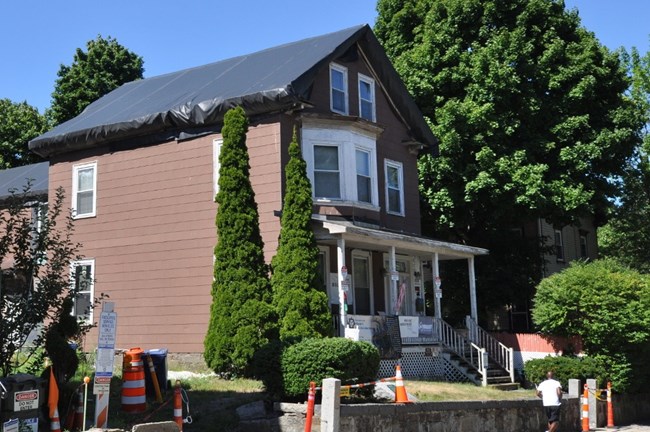
Less than a year after moving to Milwaukee, the Little family relocated to Lansing, Michigan. It was here that a local white supremacist group burned down their home. Several years later, Malcolm’s father died and the family experienced severe poverty.22 Malcolm recalled moments from his childhood when he was dizzy from hunger.23 His mother struggled with her mental health during these years, and the state eventually issued a court order to commit her to Kalamazoo State Hospital for care. Malcolm described watching his mother’s deterioration in the months before she was committed:
“We children watched our anchor giving way. It was something terrible that you couldn’t get your hands on, yet you couldn’t get away from. It was a sensing that something bad was going to happen.”24
Malcolm spent several years in foster care until 1941, when he moved to the Roxbury neighborhood of Boston to live with his half-sister Ella Little-Collins. He had visited his sister the previous year in his first trip to a big city.25 Malcolm had never seen so many African American people, businesses, and gathering spots in one location. In his autobiography, he described how living in Boston gave him a “sense of being a real part of a mass of [his] own kind, for the first time.”26
Shortly before Malcolm arrived by train in 1941, his sister purchased a two and a half story house at 72 Dale Street. Ella gave Malcolm the top level that was set up as a flat with a kitchenette. Malcolm spent the next three years living with his half-sister as he worked a series of odd jobs.27
The Ella Little-Collins House was listed in the National Register of Historic Places in 2021 for its association with Malcolm X and his family.28

Photograph by Tareq A. Ramadan.
Helping Malcolm continue on this changed path, Wilfred not only welcomed Malcolm into his home, but he also welcomed Malcolm into his work. Wilfred was a manager at Cut Rate Department Store and, there, he secured work for Malcolm.31“When he came out, he was a whole different person. He had changed his way of looking at things, but I didn't want him to get back on the street too much, because I was afraid he might get enticed back there.”30
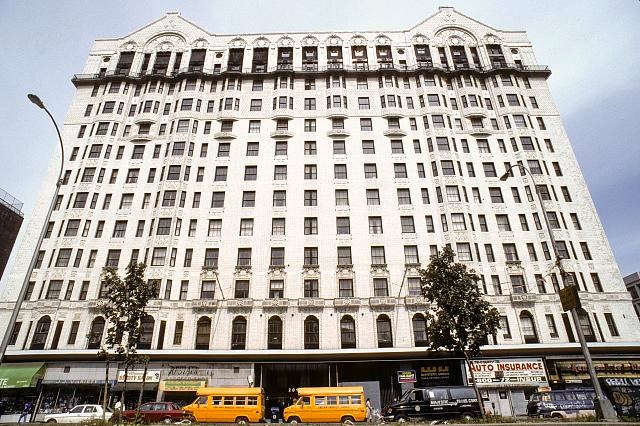
This 13-story steel-frame hotel, built in 1913, was a popular African American social spot in the mid-1900s. Malcolm X visited the hotel on numerous occasions. The building was financed by manufacturer Gustavus Sidenberg. It is a notable landmark in the Harlem neighborhood due to its white brick and white terra-cotta. In addition to hosting short and long-term guests, the hotel also included a dining hall and a bar and grill.34 Located at the corner of 125th Street and Adam Clayton Powell, Jr. Boulevard, a commercial artery, the hotel became an important gathering place in Harlem.
Even though Harlem was a predominantly Black community when the hotel was built, it did not permit African American guests until 1940. It then became a popular destination for Black Americans at a time when many places still observed segregation policies. Ebony magazine even dubbed it the “most famous Negro hotel in America” in 1946.35
Malcolm X first began visiting the hotel when he worked for the New Haven Railroad in Boston. As a porter, he often had layovers in New York City where he explored the Harlem neighborhood.36
When Fidel Castro visited New York in 1960 to address the United Nations General Assembly, Malcolm came to visit the Cuban leader at the hotel.37
Several years later, after Malcolm had split with the NOI, he founded the Organization of Afro-American Unity. Establishing his headquarters in Hotel Theresa, Malcolm traveled across the world giving speeches about the importance of recognizing Black equality.38
The Hotel Theresa was listed in the National Register of Historic Places in 2005.39
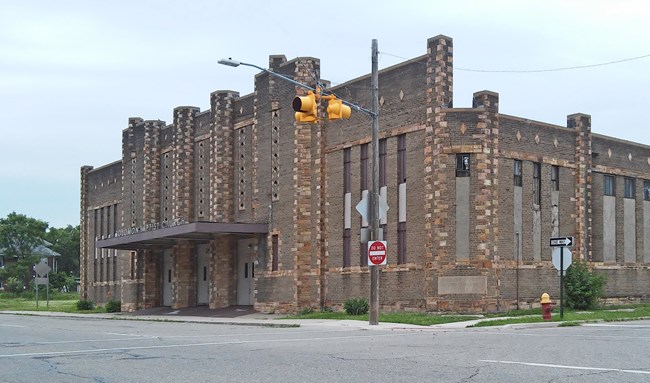
Malcolm X had a charismatic personality and was an effective public speaker. As a minister with the Nation of Islam, he spoke to his followers about Black empowerment. Some of his speeches captured his frustration with how white society treated Black and Brown Americans.
When Detroit’s King Solomon Baptist Church hosted the Northern Grass Roots Leadership Conference in 1963, Malcolm gave the keynote address. The goal of the conference was to encourage Black communities to expand the movement and demand more than civil rights.40 In his speech, “Message to the Grass Roots,” Malcolm X presented the Black Nationalist response to the March on Washington and Dr. Martin Luther King, Jr. One of Malcolm’s most famous speeches, it was also one of hist last before he broke with the Nation of Islam.
In April 1964, Malcolm X returned to King Solomon Baptist Church to deliver his “The Ballot or the Bullet” speech. Black ministers in Detroit tried to prevent Malcolm from using the church. They disagreed with his thoughts on encouraging Black communities to live separately from white society. As the church hall had already been rented for the event, the ministers could not stop Malcolm from speaking. 1964 was an election year, and there was a lot of conversation about Black voting rights. Civil rights leaders encouraged Black women and men to cast their vote for the next president.41
The King Solomon Baptist Church was listed in the National Register of Historic Places in 2015.42
1. Malcolm X and Alex Haley, The Autobiography of Malcolm X, (New York: Grove Press, 1965), 8-10.
2. Ibid, 3-4.
3. The police ruled Earl Little’s death an accident, but Malcolm X expressed doubts about this in his autobiography. He recalled a lot of tension between his parents in the months leading up to his father’s death due to repeated threats from the Black Legion, a white supremacist group based in Michigan. Malcolm X and his mother believed Earl was murdered by members of the Legion. Ibid, 12-13.
4. Michael Eric Dyson, Making Malcolm: The Myth and Meaning of Malcolm X, (New York: Oxford University Press, 1995), 5; X and Haley, The Autobiography of Malcolm X, 43-44; Les Payne and Tamara Payne, The Dead Are Arising: The Life of Malcolm X, (New York: Liveright Publishing Corporation, 2020), 139-140.
5. “Muhammad Ali,” National Archives and Records Administration, (accessed July 9, 2021), https://www.archives.gov/research/african-americans/individuals/muhammad-ali
6. When Africans when forcibly brought to North America in the 17th, 18th, and 19th centuries, they were not allowed to keep their names. Instead, they were given the last name of their enslaver. To recognize the loss of his African heritage, Malcolm changed his last name to “X.” “Elijah Muhammad” National Archives and Records Administration, (accessed July 7, 2021), https://www.archives.gov/research/african-americans/individuals/elijah-muhammad; Marable, Malcolm X, p. 96; Malcolm X, Autobiography, p. 229
7. The NOI’s house of worship was referred to as a temple during Malcolm’s tenure. The organization eventually adopted the use of the term mosque. Imam Benjamin Karim, “Introduction,” in The End of White World Supremacy: Four Speeches by Malcolm X, (New York: Arcade Publishing, 1971).
8. Ibid, 14-15.
9. X, Malcolm. "The Race Problem." African Students Association and NAACP Campus Chapter. Michigan State University, East Lansing, Michigan. (23 January 1963).
10.Russell Rickford, Betty Shabazz: A Remarkable Story of Survival and Faith Before and After Malcolm X, (Naperville, IL: Sourcebooks, 2003), 36–51.
11. Payne, The Dead are Arising, 435.
12. “The Proposed Masjid Wali Muhammad/ Temple No. 1 Historic District Final Report,” Detroit City Council, (accessed July 7th, 2021), 10-11, https://detroitmi.gov/sites/detroitmi.localhost/files/2018-08/Masjid%20Wali%20Muhammad_FINAL%20REPORT.pdf
13. Dyson, Making Malcolm, 8-11.
14. The influential court cases of the late 1940s and 1950s (such as Shelley v. Kraemer and Brown v. Board) advanced Black civil rights, Elijah Muhammad remained steadfast in his belief that Black people should have their own society. Payne, The Dead are Arising, 317. Malcolm’s founding of his own organization allowed him to become more active in bettering the lives of African Americans. Payne, The Dead are Arising, 436-437.
15. Ibid, 476-480.
16. Ibid, 12, 24.
17. Ibid, 24.
18. Mary G. Rolinson, Grassroots Garveyism: The Universal Negro Improvement Association in the Rural South, 1920-1927, (The University of North Carolina Press, 2007), 24-26.
19. In a series of interviews, Wilfred, the oldest son of Louise and Earl Little, recounts his memories from the night the KKK terrorized his family. Payne, The Dead are Arising, 3-5; Malcolm X also detailed the events of this night in his autobiography relying on stories from his mother. X and Haley, The Autobiography of Malcolm X, 3-4.
20. Payne, The Dead are Arising, 55-56.
21. “Nebraska: Malcolm X House Site Omaha,” National Park Service, (accessed July 9th, 2021), https://www.nps.gov/places/nebraska-malcolm-x-house-site-omaha.htm
22. While Malcolm was not yet born when his family was confronted by the KKK in Omaha, his mother told him about how hooded men broke the windows of their house looking for his father who was out of town at the time. He personally recalls the Black Legion’s assault on his family when they burned down the house in Lansing, Michigan. X and Haley, The Autobiography of Malcolm X, 7-10.
23. Ibid, 17.
24. Ibid, 23-24.
25. Ibid, 41.
26. Ibid, 42.
27. Payne, The Dead are Arising, 145-146.
28. Massachusetts Historical Commission, "National Register of Historical Places Registration Form: Malcolm X-Ella Little Collins House," Nps.gov (The National Parks Service, January 22, 2021), NPGallery Asset Detail (nps.gov).
29. X and Haley, The Autobiography of Malcolm X, 172.
30. Wilfred Little, “Our Family from the Inside: Growing Up with Malcolm X,” Contributions in Black Studies 13/14 (1995-1996): 15.
31. Tareq Ramadan and Todd Walsh, “National Register of Historical Places Registration Form: Malcolm X House,” Nps.gov (The National Parks Service, October 15, 2021), https://www.nps.gov/subjects/nationalregister/upload/100007205_508.pdf, 23.
32. Malcolm X and Bruce Perry, The Last Speeches (New York Pathfinder, 2008), 18.
33. Tareq Ramadan, “National Register of Historical Places Registration Form: Malcolm X House,” Nps.gov, The National Parks Service, October 15, 2021, https://www.nps.gov/subjects/nationalregister/upload/100007205_508.pdf.
34. Hotel Theresa National Register of Historic Places nomination, https://catalog.archives.gov/id/75319604, section 8, page 1.
35. Ibid, section 8, page 8. .
36. Payne, The Dead are Arising, 164-169.
37. Ibid, 283.
38. X and Haley, The Autobiography of Malcolm X, 502.
39. Anthony Robins, "National Register of Historical Places Registration Form: Hotel Theresa," catalog.archives.gov, The National Parks Service, April 15, 2005, National Archives NextGen Catalog.
40. Van Gosse, “Malcolm X,” in The Movements of the New Left, 1950-1975: A Brief History with Documents, (New York: Palgrave Macmillan, 2005).
41. George Breitman, ed., Malcolm X Speaks: Selected Speeches and Statements, (New York: Grove Press, 1965), 53
42. Timothy Boscarino and Michael Webb, "National Register of Historical Places Registration Form: King Solomon Baptist Church," nps.gov, The National Parks Service, February 24, 2015, Asset Detail (nps.gov).
Boscarino, Timothy and Michael Webb. "National Register of Historical Places Registration Form: King Solomon Baptist Church." nps.gov. The National Parks Service, February 24, 2015, Asset Detail (nps.gov).
Breitman, George, ed. Malcolm X Speaks: Selected Speeches and Statements. New York: Grove Press, 1965.
Dyson, Michael Eric. Making Malcolm: The Myth and Meaning of Malcolm X. New York: Oxford University Press, 1995.
“Elijah Muhammad” National Archives and Records Administration, (accessed July 7, 2021), https://www.archives.gov/research/african-americans/individuals/elijah-muhammad; Marable, Malcolm X, p. 96; Malcolm X, Autobiography, p. 229
Fox, Jeremy C. and Christine Mui. “Former Malcolm X home in Roxbury added to National Register of Historic Places.” Boston Globe, March 4, 2021, https://www.bostonglobe.com/2021/03/05/metro/former-malcolm-x-home-roxbury-added-national-register-historic-places/
Gosse, Van. “Malcolm X.” In The Movements of the New Left, 1950-1975: A Brief History with Documents. New York: Palgrave Macmillan, 2005.
Hotel Theresa National Register of Historic Places nomination, https://catalog.archives.gov/id/75319604.
Karim, Imam Benjamin. “Introduction.” In The End of White World Supremacy: Four Speeches by Malcolm X. New York: Arcade Publishing, 1971.
Little, Wilfred (1995) “Our Family from the Inside: Growing Up with Malcolm X,” Contributions in Black Studies: Vol. 13, Article 2. https://scholarworks.umass.edu/cibs/vol13/iss1/2
“Muhammad Ali,” National Archives and Records Administration, (accessed July 9, 2021), https://www.archives.gov/research/african-americans/individuals/muhammad-ali
“Nebraska: Malcolm X House Site Omaha,” National Park Service. Accessed July 9th, 2021, https://www.nps.gov/places/nebraska-malcolm-x-house-site-omaha.htm
Payne, Les and Tamara Payne. The Dead Are Arising: The Life of Malcolm X. New York: Liveright Publishing Corporation, 2020.
Ramadan, Tareq and Todd Walsh. “National Register of Historical Places Registration Form: Malcolm X House.” Nps.gov. The National Parks Service, October 15, 2021. https://www.nps.gov/subjects/nationalregister/upload/100007205_508.pdf.
Rickford, Russell. Betty Shabazz: A Remarkable Story of Survival and Faith Before and After Malcolm X. Naperville, IL: Sourcebooks, 2003.
Robins, Anthony. "National Register of Historical places Registration Form: Hotel Theresa." catalog.archives.gov. The National Parks Service, April 15, 2005. National Archives NextGen Catalog.
Rolinson, Mary G. Grassroots Garveyism: The Universal Negro Improvement Association in the Rural South, 1920-1927. The University of North Carolina Press, 2007.
“The Proposed Masjid Wali Muhammad/ Temple No. 1 Historic District Final Report,” Detroit City Council. Accessed July 7th, 2021, https://detroitmi.gov/sites/detroitmi.localhost/files/2018-08/Masjid%20Wali%20Muhammad_FINAL%20REPORT.pdf
X, Malcolm, and Bruce Perry. The Last Speeches. New York Pathfinder, 2008
X, Malcolm and Alex Haley. The Autobiography of Malcolm X. New York: Grove Press, 1965.
X, Malcolm. "The Race Problem." African Students Association and NAACP Campus Chapter. Michigan State University, East Lansing, Michigan. 23 January 1963.
Part of a series of articles titled Curiosity Kit: Malcolm X .
Previous: Learning from Malcolm X
Last updated: September 25, 2024